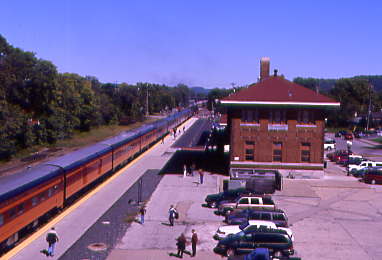
Sydney Metro – Western Sydney Airport stations Parklife Metro will also operate and maintain the Sydney Metro - Western Sydney Airport line for 15 years after it becomes operational. The consortium will deliver six new stations between St Marys and the new Aerotropolis, 12 new metro trains, core rail systems and the stabling and maintenance facility to be built at Orchard Hills. In December 2022 the largest Public Private Partnership (PPP) contract in New South Wales was awarded to Parklife Metro. In March 2022, the contract to deliver approximately 10.6 kilometres of elevated viaduct, earthworks for track formation, a rail bridge over the new M12 motorway, a rail bridge within the airport and associated works, was awarded to CPB Contractors and United Infrastructure Joint Venture. The tunnelling contract was awarded in December 2021 to CPB Contractors and Ghella Joint Venture to build the new twin metro rail tunnels. The Australian and NSW governments have awarded all three major contracts for the Sydney Metro – Western Sydney Airport project. The 23-kilometre new railway will link residential areas with job hubs including the new Aerotropolis, and connect travellers from the new airport to the rest of Sydney’s public transport system. The city-shaping project, from St Marys through to the new airport and the Western Sydney Aerotropolis, will provide a major economic stimulus for western Sydney, supporting more than 14,000 jobs during construction for the NSW and national economies. New metro rail will become the transport spine for Greater Western Sydney, connecting communities and travellers with the new Western Sydney International (Nancy-Bird Walton) Airport and the growing region. Western Sydney Airport line planning and complianceĪbout Sydney Metro – Western Sydney Airport.

City and Southwest planning and compliance.Orchard Hills Stabling and Maintenance Facility.Claremont Meadows Intermediate Services Facility.Clyde Stabling and Maintenance Facility.Marrickville Dive Site and Trains Facility South.Blues Point temporary tunnel access site.Nevertheless, there are concerns about the viability of such a project due to the seismically active nature of the region, given that the Mount Etna volcano is only a stone’s throw distance from there.įormer prime minister Silvio Berlusconi, a partner in Italy's right-wing coalition, welcomed the revival of the project which he had also backed as prime minister in 2009. In his view, it would save the release of 140,000 tonnes of CO2 into the atmosphere, not to mention the thousands of jobs it would create.Ĭurrently, crossing the 3.8-km watery stretch is possible via a ferry ride between the ports of Messina (Sicily) and Villa San Giovanni (Calabria). After the decision, he went on Twitter where he hailed the decision as being taken on a “historic day”.Ĭouching the decision in contemporary parlance to make it appealing to as broad an audience as possible, he also described it as the “greenest project in the world”. These days, however, its main advocate was no other than Matteo Salvini, deputy PM and also the Minister of Infrastructure.

The idea itself dates back to the Ancient Romans and throughout the centuries it has gone through various iterations (including an idea to build an underwater tunnel in the 19 th century) – all ultimately fruitless. The text of the decree intervenes overall in different areas (among the main ones: corporate structure and governance of the Strait of Messina, concession relationship, a restart of the planning and design activities of the work, and environmental monitoring service), in order to allow, as soon as possible, the restart of the executive design procedure for the bridge. Yesterday, 16 March, the Italian government approved a decree which will revive the idea of building a bridge over the Strait of Messina to connect the island of Sicily to the mainland. The idea dates back even to Antiquity, but how feasible is it? Italian government greenlights bridge between Sicily and mainland


 0 kommentar(er)
0 kommentar(er)
